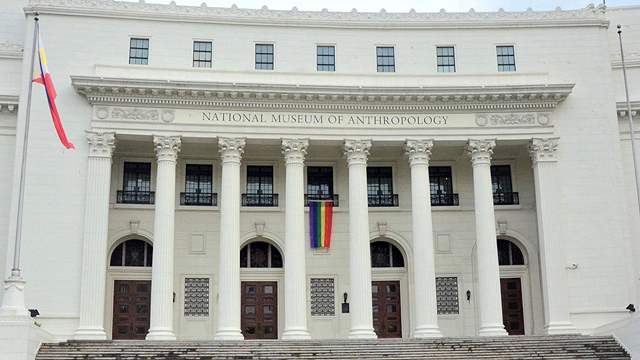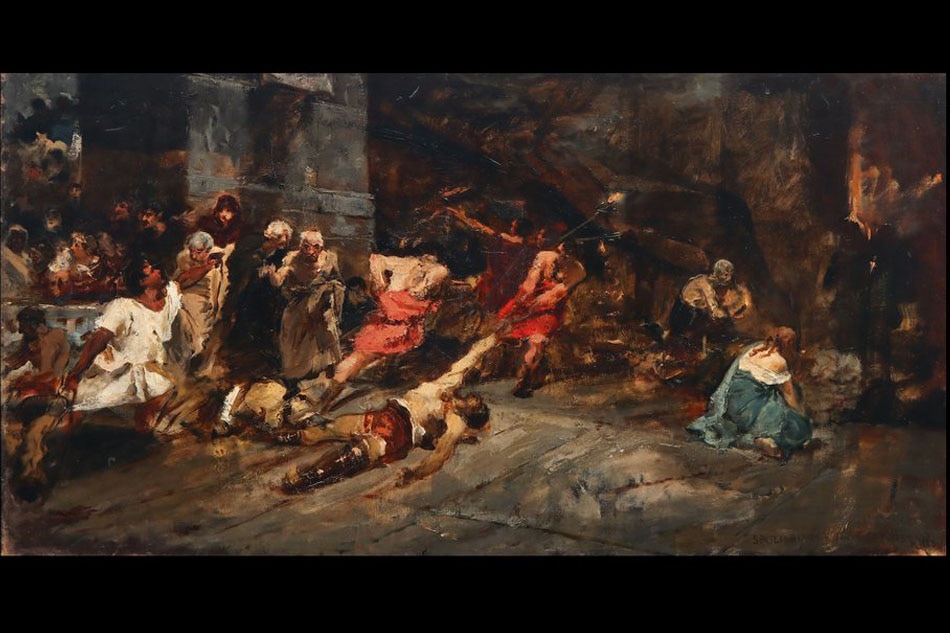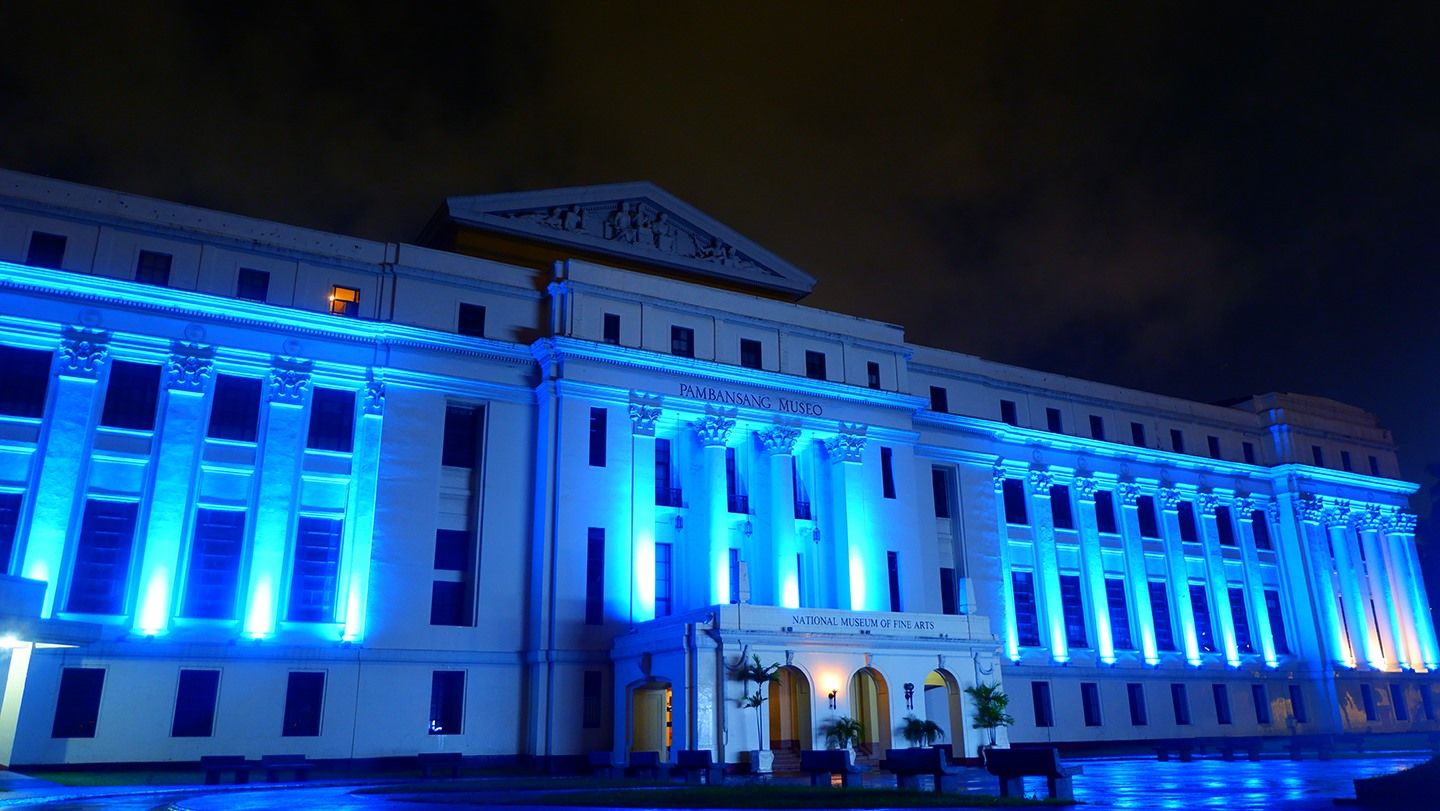The National Museum of the Philippines (NMP) will reopen its doors on Tuesday, October 19, just in time for Museums and Gallery Month.
On Friday, October 15th, the NMP posted a notice on its Facebook page detailing the museum’s reopening safety precautions. The museum complex will only let people who are properly vaccinated, according to the notice.
Photo Courtesy: National Museum of the Philippines/Facebook
National Museum of the Philippines: Short Background
Formed as a government agency museum in 1901, the National Museum (also called Pambansang Museo in the local dialect) conducts research and conservation activities on every island in the archipelago. For starters, the National Museum has an extensive collection dating back to prehistoric times, but you’ll also find some cutting-edge pieces of art, like Juan Luna’s monumental Spoliarium, which stands at over four meters high and seven and a half meters wide, making it the Philippines’ largest painting.
What is there to see at the National Museum of the Philippines?
1. National Museum of Natural History
The National History Museum is a great place to start if you’re a history buff. Botany, geology, and zoology collections can be found inside the National Museum of Natural History. The Tree of Life, Lolong (the skeleton of the Philippines’ largest crocodile in captivity), Rainforest Diorama, Mangrove Diorama, and more can all be found at the National Museum of Natural History.

Photo Courtesy: Martin San Diego/Rappler
The building was constructed as the Agriculture and Commerce Building in 1940. It was created in the late 1930s in the neoclassical style by Filipino architect Antonio Toledo and shares the same dimensions and floor layout as its twin counterpart, the Finance Building, on the circle’s northern side.
2. National Museum of Anthropology
The National Museum of Anthropology is a five-story structure with an unusual trapezium layout, featuring a chamfer at the northeast obtuse vertex and a concave side facing the rotonda on the southeast.

Photo Courtesy: Maileen Rondal/National Museum Gender and Development Committee
It features exhibits and educational materials about the history of the Philippine Islands and its people. On display are artifacts from the Paleolithic, Neolithic, Metal Age, and Ceramic Age of the Philippines’ prehistory.
Exhibits in the National Museum of Anthropology
San Diego Exhibit
Five Centuries of Maritime Trade Before the Arrival of the West
The Origin (Pinagmulan)
Archaeological Treasures (Kaban ng Lahi)
The Filipinos and Their Rich Cultural Heritage (Kinahinatnan)
3. National Museum of Fine Arts
The Philippine National Museum’s National Museum of Fine Arts is one of the most preferred spots. The structure, designed by Ralph Harrington Doane, Antonio Maalac Toledo, and Juan M. Arellano, was constructed between 1918 and 1926.

Photo Courtesy: Salcedo Auctions
Spoliarium of Juan Luna, one of the most famous and significant paintings in the National Museum, can be found here.
Exhibits in the National Museum of Fine Arts
The Old House of Representatives Session Hall
Homage to Dr. José Rizal
Religious Art from the 17th to 19th centuries
Art Prints from the Archives of the Royal Botanical Garden in Madrid
Academic and Neoclassical Sculpture
Classical Art from the 20th century
The Progress of Medicine in the Philippines by Carlos V. Francisco
Drawings of Fernando C. Amorsolo
Works of Guillermo E. Tolentino
Academic and Romantic Art
4. National Planetarium
Filipino architect Federico S. Ilustre constructed the large domed edifice, which can accommodate 310 people. The Bureau of Public Works (now the Department of Public Works and Highways [DPWH]) began construction in 1974 along Padre Burgos Avenue in Rizal Park.
The major purpose of the National Planetarium is to disseminate astronomical knowledge through planetarium performances, seminars, demonstrations, displays, and actual celestial observations. Its distinguishing aspect is the realistic depiction of astronomical bodies, which piques viewers’ curiosity and stimulates their imagination.

Photo Courtesy: Allonier/National Museum Planetarium
While it is set to temporarily close for the building’s decommissioning, the National Museum of the Philippines has announced plans for the development of a new National Planetarium in the future.
Planning to visit the National Museum of the Philippines? Here are some guidelines and information to help you with!
Discover our history safely!
RELATED ARTICLE:
8 facts about the Manila Metropolitan Theater as colorful as its history
Las Casas Filipinas de Acuzar in Bataan and preserving cultural heritage in the Philippines
A Look at the Philippines’ Architectural History
CITATIONS:
- History. National Museum. (n.d.). Retrieved October 13, 2021, from https://www.nationalmuseum.gov.ph/about-us/history/.
- National Museum of Anthropology. National Museum. (n.d.). Retrieved October 13, 2021, from https://www.nationalmuseum.gov.ph/our-museums/national-museum-of-anthropology/.
- National Museum of Fine Arts. National Museum. (n.d.). Retrieved October 13, 2021, from https://www.nationalmuseum.gov.ph/our-museums/national-museum-of-fine-arts/.
- National Museum of Natural History. National Museum. (n.d.). Retrieved October 13, 2021, from https://www.nationalmuseum.gov.ph/our-museums/national-museum-of-natural-history/.
- National Planetarium. National Museum. (n.d.). Retrieved October 13, 2021, from https://www.nationalmuseum.gov.ph/our-museums/national-planetarium/.
- Lalu, G. P. (2021, October 12). National Planetarium closed for now as building set for decommissioning. INQUIRER.Net. https://newsinfo.inquirer.net/1500487/national-planetarium-closed-for-now-as-building-set-for-decommissioning
![]()










